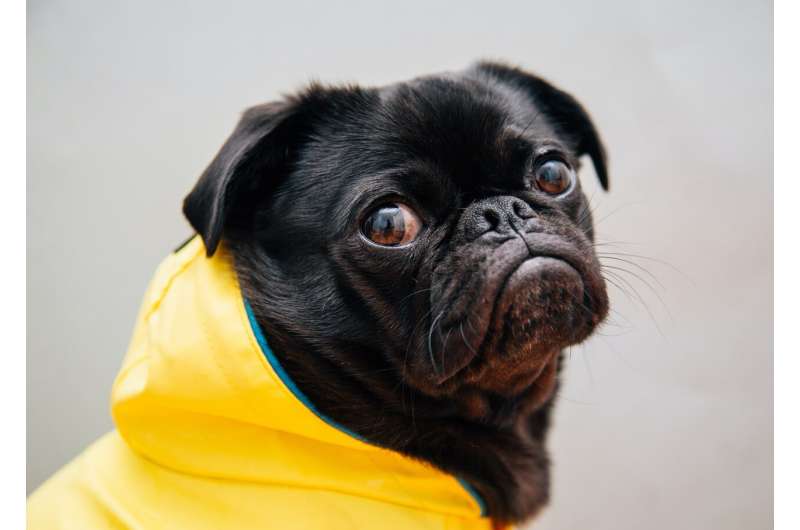This article has been reviewed according to Science X's and . have highlighted the following attributes while ensuring the content's credibility:
fact-checked
peer-reviewed publication
trusted source
proofread
Pugs and Persian cats show strikingly similar 'smushed' faces due to artificial selection

Through intensive breeding, humans have pushed breeds such as pug dogs and Persian cats to evolve with very similar skulls and "smushed" faces, so they're more similar to each other than they are to most other dogs or cats.
For the first time, scientists at Cornell University and Washington University have uncovered examples of how selection pressures from breeding cats and dogs have led to "convergence"—the tendency of unrelated animals and plants to evolve similar characteristics under similar environmental conditions.
In this case, the researchers found remarkable examples of convergence both within these two domesticated species and also between them. The convergence showed up in breeds with short faces, technically referred to as brachycephalic or "smushed" faces.
As a result of artificial selection from breeding, certain breeds of these two species—which shared a common ancestor but have been evolutionarily separated for 50 million years—have converged to such an extreme that they are more similar to each other than they are to most members of their own species or their ancestors.
This phenomenon hadn't previously been observed in domesticated species, according to the paper, which is in PNAS.
When the researchers measured the skulls of brachycephalic dogs and cats, they found strikingly similar overlap between these breeds from two different species.
"Persian cats and pug and Pekingese dogs all have skull shapes that are very similar to each other, with flat and short faces, and their muzzles and palettes are tilted up in the same way," said Abby Drake, senior lecturer at Cornell. Drake is a corresponding author on the paper along with Jonathan Losos, professor of biology at Washington University.
The same pattern of convergence has occurred multiple times within each species. In dogs, it occurred in bulldog breeds, but then separately in Asian dog breeds such as Pekingese and Shih Tzu. In cats, the same traits can be seen in Persian, Himalayan and Burmese breeds.
When convergence occurs through natural selection—such as in the development of wings in birds, bats and insects—it is usually a sign of a successful trait. In the case of domesticated species, evolution happens so rapidly, it can offer insight into evolutionary processes, Drake said.
The researchers mapped the skull shapes, compared them and discovered these similarities, even though the ancestors of cats and dogs looked quite different. Dogs descended from wolves, a larger animal with a long muzzle, while cats descended from wildcats, which are smaller animals with a shorter face and a snout.
"They start off in different places," Drake said, "but because humans applied the same selection pressures, they evolved to look almost identical to each other."
Artificial selection from breeding has led to a remarkable diversity of both cats and dogs, though dog diversity is even more extreme. It turns out dogs as a species are more diverse than the entire order of Carnivora.
"We're seeing this very large evolutionary variation within a species that's only been evolving for a relatively very short amount of time," Drake said. "That's a remarkable thing to see in evolution, which takes millions of years, but we did it with dogs by pushing them to the extremes."
In this study, the team similarly found that cats are more diverse as a species than the entire family of Felidae, which has 41 species.
Unfortunately, Drake said, humans have pushed brachycephalic breeds to such extremes that they're susceptible to breathing, eating and birthing issues and wouldn't survive in the wild.
In the study, the researchers collected three-dimensional measurements of skull morphology from CT scans of domestic cats, dogs, wildcats, wolves, species within the Canidae (dog) family and from the Felidae (cat) family, and additional species such as weasels and walruses from the order Carnivora. These were acquired from veterinary institutions, museum collections and MorphoSource, a natural history digital archive.
More information: Drake, Abby Grace et al, Copy-cat evolution: Divergence and convergence within and between cat and dog breeds, Proceedings of the National Academy of Sciences (2025). .
Journal information: Proceedings of the National Academy of Sciences
Provided by Cornell University





















